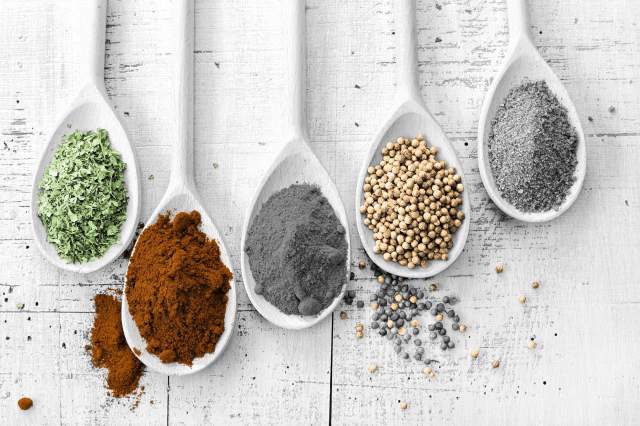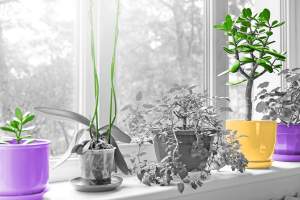
There’s a Difference Between Spices and Herbs
The terms “herbs” and “spices” are often used interchangeably, but there is a difference between the two. Herbs come from the leaves of herbaceous plants — aka those that don’t have woody stalks. Spices also come from plants, of course, but can be harvested from any portion, including the roots, bark, fruit, or seeds. (So, for example, mint leaf is an herb, while cumin seed is a spice.) And while you may find salt adjacent to cinnamon and oregano at the grocery store, or store it on your spice rack, it’s actually a mineral.

Cinnamon Was Sometimes Burned at Roman Funerals
Researchers believe cinnamon may be one of the world’s oldest spices, and during its earliest known history, the heavily scented bark was actually more valuable than gold. However, the civilizations that collected this spice back then had a variety of uses for it besides eating. In ancient Egypt, cinnamon was used for medicine and religious practices. Similarly, ancient Romans considered the scent sacred, sometimes burning it at funerals of the wealthy. Cinnamon eventually gained its most common modern use — as a food flavoring — around the Middle Ages.

Garlic Is Actually a Vegetable
Historians believe humans have been harvesting garlic for about 5,000 years, with people in ancient Egypt and India being the first to adopt the pungent spice. Garlic has remained a pantry staple ever since, though unlike most spices, it’s botanically a vegetable (even if it’s also one we use as a spice). Garlic belongs to the onion family, and the entire plant — bulb, leaves, and flowers — is edible.
More Interesting Reads

Peppercorns Are Fruits, Not Seeds
Before they’re cracked or ground down, peppercorns tend to resemble seeds, though they’re actually dried fruit. Black pepper plants (aka piper nigrum) are flowering vines native to India and Southeast Asia, where their fruits grow in tiny, grape-like clusters. Peppercorns are initially green and turn darker as they dry, eventually reaching their deep, nearly black color.

Nutmeg May Help You Sleep Better
Nutmeg sees most of its use during the holiday baking season, added into pies and baked goods from Thanksgiving through the winter holidays. However, researchers believe adding the antioxidant-rich spice into your diet more regularly can help you sleep better and longer. Nutmeg can also boost your mood and even help balance blood sugar.

Dill Seeds Were Once Used as Mints
Feathery dill leaves are best known for flavoring pickles, though their seeds contain an anise-like flavor when chewed. Colonial Americans took advantage of this refreshing flavor, using dill seeds as a natural breath mint and giving them another name: “meetinghouse seeds.” During long church services, the edible seeds were occasionally given to fidgety children to keep them calm or help perk up sleepy congregants.

Archaeologists Have Discovered Preserved Spices on a Sunken Ship
If your pantry contains ginger, peppercorns, and clove, you have something in common with King Hans, the 15th- and 16th-century ruler of Denmark and Norway. Researchers have unearthed spices, along with peppercorns, dill, and the remnants of other foods, from the Gribshunden, a ship once owned by the king that has sat at the bottom of the Baltic Sea since 1495. Despite being underwater for more than 500 years, the spices have been preserved thanks to cold waters and low salinity. Some, such as the five-centuries-old saffron, even maintained their aromas. As for spices in your above-ground pantry, most stay fresh between two and four years before losing their potency.







